Namibia << nuh MIHB ee uh >> is a country in southwestern Africa. It was formerly named South West Africa. Windhoek is the capital and largest city of Namibia.
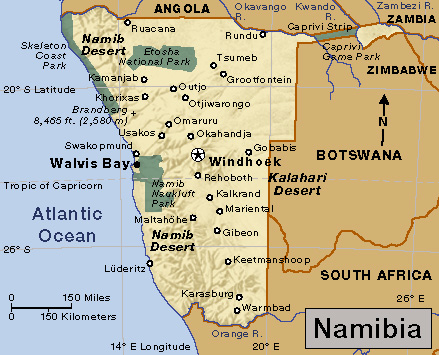
Most of Namibia’s people are Black people of African descent. But the territory was held by neighboring South Africa from 1916 to 1990—a period when white people of European descent fully controlled South Africa’s government. In March 1990, after many years of negotiations, Namibia gained full independence from South Africa.
Much of Namibia’s land is dry and unfertile. But the land is rich in mineral deposits, including diamonds and uranium.
Government.
Namibia’s government is headed by a president. The people elect the president to a five-year term. Namibia’s legislature consists of two groups—the National Assembly and the National Council. The National Assembly writes the nation’s laws, and the National Council reviews them. The National Assembly has 104 members, who serve five-year terms. Of these, 96 are elected by the people and 8 are appointed by the president. The National Council has 42 members. Each of the country’s regional councils elects 3 members of the National Council to five-year terms. Regional council members are elected by the people. The president of Namibia appoints a vice president, who assists and advises the president. The president appoints a prime minister from among the members of the National Assembly. The prime minister leads the Assembly.
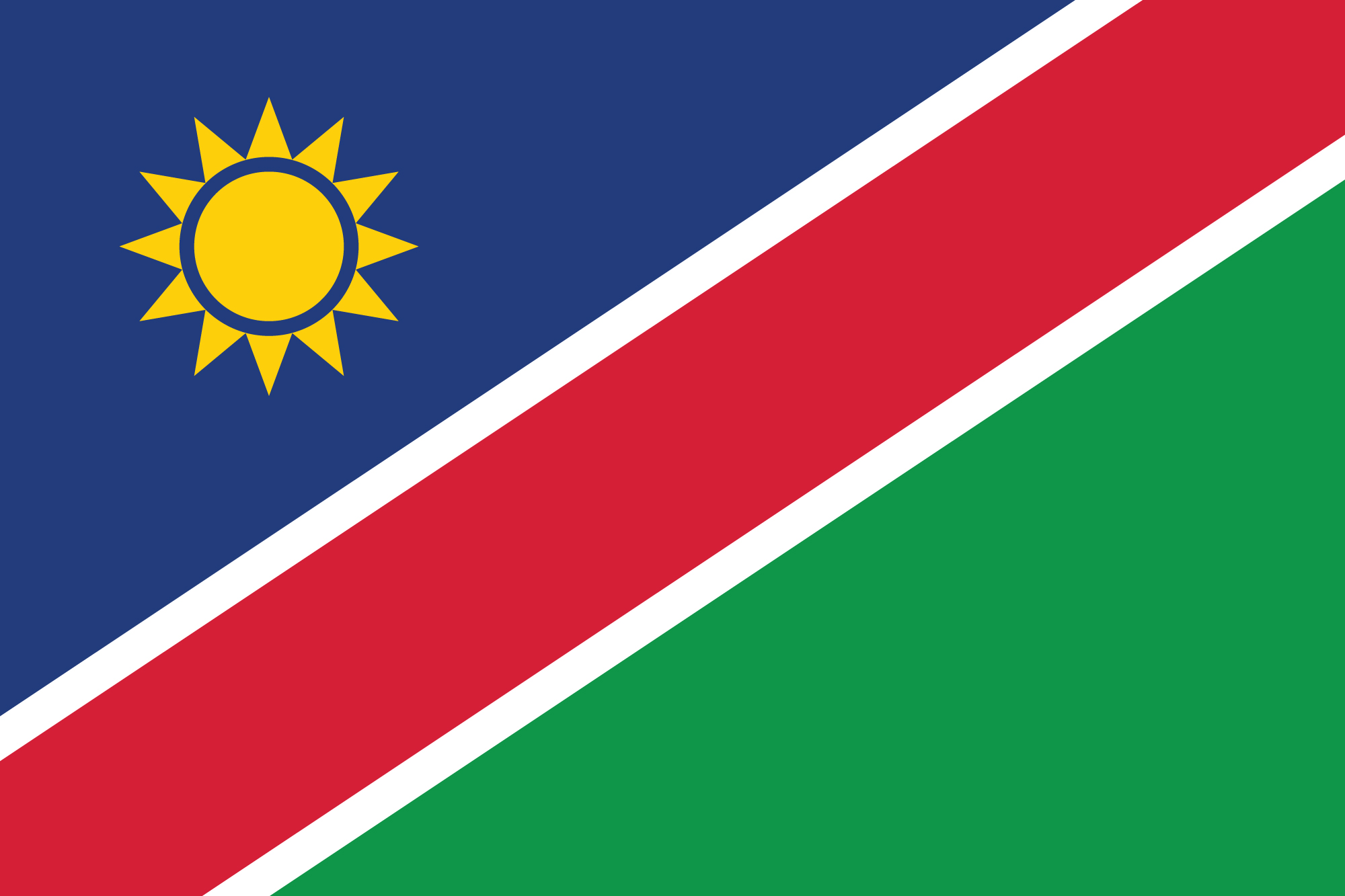
Namibia’s most powerful political party is the South West Africa People’s Organization (SWAPO). The main opposition party is the Popular Democratic Movement (PDM).
Namibia’s military is the Namibia Defense Force. Service in the military is voluntary.
People.
Namibians belong to a number of ethnic groups. The Ovambo (also spelled Owambo) form the largest group. They comprise about half of the country’s population. The Ovambo live in the north, near the Angolan border. This region is called Ovamboland or Ovambo. Other northerners include the Kavango, who live near the Okavango River; and the Caprivians, who inhabit the eastern end of the narrow strip of land called the Caprivi Strip. The Damara and the Herero occupy central Namibia. San and Tswana people live along the country’s eastern border. Two groups of people of mixed ancestry live south of Windhoek—the Basters, who live in or near Rehoboth; and the Nama, who inhabit the far south.
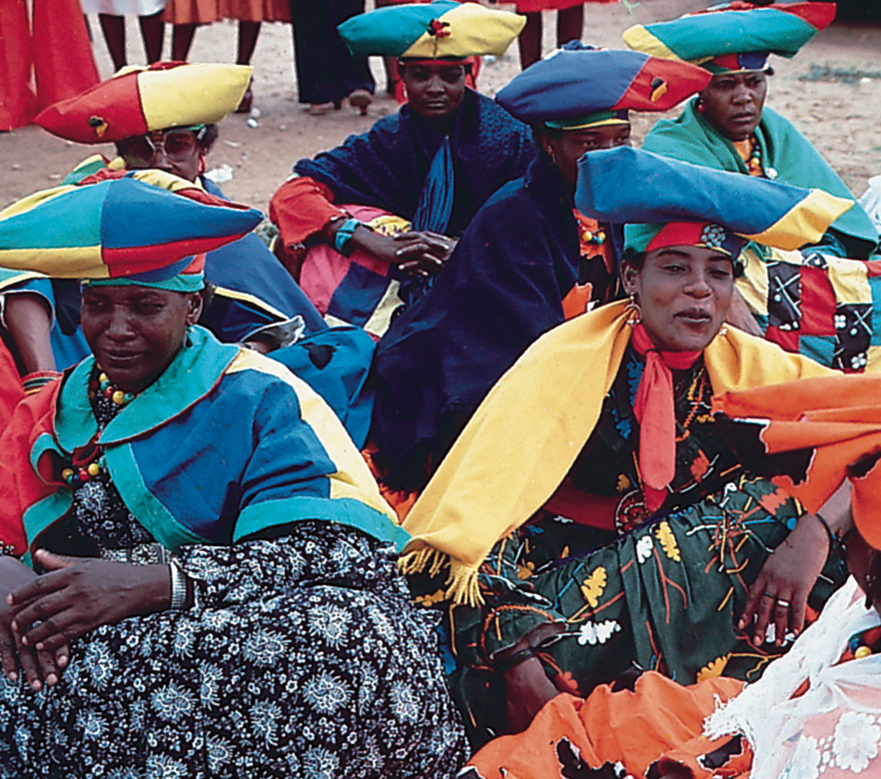
People of Dutch, English, German, and other European ancestry live mainly in or near cities or towns. People of mixed European and African ancestry called Coloureds also live primarily in urban areas.
Most people of northern Namibia fish, grow crops, and raise livestock for a living. Many Ovambo and Kavango men also work in copper mines at Tsumeb or in diamond mines near the southern border. Most of the rural people south of Ovamboland farm and raise livestock. Many Namibians of European descent hold administrative jobs in urban areas. The standard of living among Namibia’s African ethnic groups varies, but most people of African descent must struggle to make a living. People of European ethnicity generally have higher incomes than people of African ethnicity. But when Namibia gained independence, the government began working to raise the economic level of the Africans.
Namibia’s official language is English. But most Namibians speak local African languages. About 15 such languages are spoken in the country. About 90 percent of the people are Christians. Lutherans form the largest Christian denomination. Other Christian groups, in order of size, are Roman Catholics, Anglicans, and members of the Dutch Reformed Church.
Public schools provide Namibians with free education. The University of Namibia (formerly the Academy for Tertiary Education), the Namibia University of Science and Technology (formerly the Polytechnic of Namibia), and the International University of Management offer post-secondary education.
Land and climate.
Namibia is bordered on the north by two large rivers, the Kunene and the Okavango. The Kwando River cuts through the Caprivi Strip. The Zambezi River flows along the northeastern border, and the Orange River forms Namibia’s southern border. Otherwise, Namibia is a dry land. Droughts often occur.
The western border of Namibia stretches 950 miles (1,500 kilometers) along the Atlantic Ocean. Huge sand dunes of the Namib Desert lie near the coast. The Kalahari Desert occupies eastern Namibia. The inland territory is mostly a rolling plain about 4,000 feet (1,200 meters) above sea level. This area in Namibia has stubby trees and enough grassland for grazing cattle and growing corn.
Large antelopes live on the interior plain of Namibia. Elephants adapted to desert conditions inhabit the northwest corner of the country. Etosha National Park, which is a huge reserve in north-central Namibia, has a variety of animals, including antelopes, cheetahs, elephants, giraffes, lions, rhinoceroses, and zebras.
Daytime temperatures in Namibia average 75 °F (24 °C) in January and 68 °F (20 °C) in June. Namibia receives most of its rain between December and March. The average annual rainfall totals about 20 inches (50 centimeters) in the north and about 8 to 16 inches (20 to 40 centimeters) in the center. The south receives only about 1 to 6 inches (2.5 to 15 centimeters) of rain a year.
Economy.
Mining ranks as one of Namibia’s most important economic activities. Diamonds are the chief mined product. Other minerals include copper, lead, uranium, and zinc. Traditionally, farming, livestock raising, and fishing have also been important economic activities. But drought and other problems have reduced farming and livestock activities, and overfishing has reduced fishing in the Atlantic. Most farmers grow only enough food crops for their own use. The chief farm crops include corn, grapes, millet, and onions. Beef and dairy cattle, goats, and sheep are the most important livestock. The fishing industry yields hake, mackerel, and sardines. Little manufacturing takes place in Namibia.
Namibia’s leading exports include fish products and jewelry diamonds. The country imports food, machinery, petroleum and petroleum products, and transportation equipment. The chief trading partners include Botswana, China, South Africa, the United States, and Zambia.
Walvis Bay is the chief port. Namibia’s railroads connect its major urban areas with one another and with South Africa. Most of Namibia’s roads are unpaved. International airports are near Walvis Bay and Windhoek.
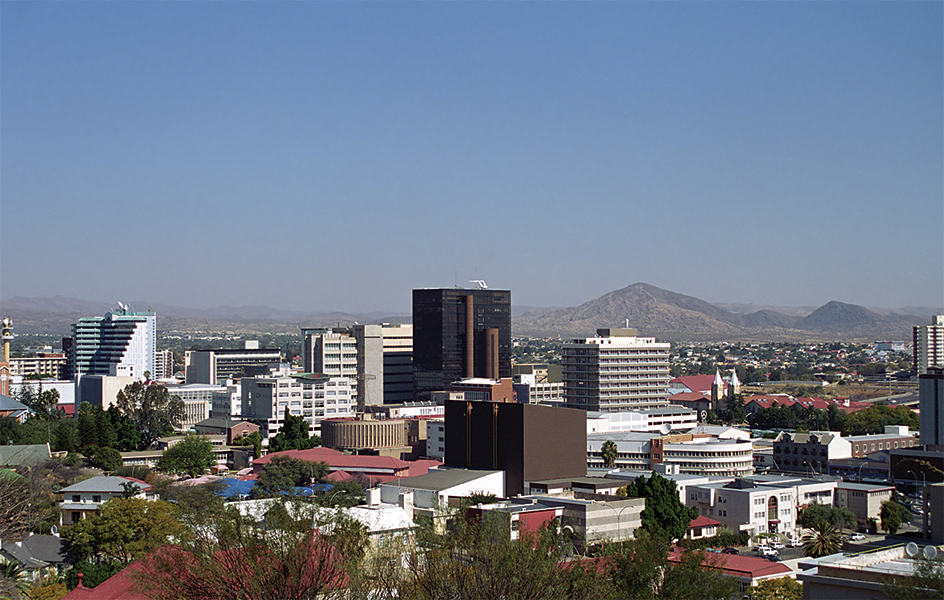
History.
Both the Damara and the San people claim to be the original inhabitants of Namibia. Through the years, large numbers of Herero and Ovambo people moved to Namibia from the north. By the 1800’s, the Damara, Herero, and Ovambo were the largest groups, and the Kavango and the Caprivians had settled where they now live. Other groups arrived in the 1800’s.
Beginning in 1868, German settlers, missionaries, and soldiers colonized Namibia’s coast. Germany annexed the land in 1884, calling it German Southwest Africa. In the 1890’s, the Germans brutally forced the Herero and Damara out of the Windhoek area. The Herero began to revolt in 1904. By the time the Germans put down the revolt in 1907, they had killed about 65,000 Herero.
In 1915, during World War I, South African troops attacked the Germans and took over Namibia. The South Africans wanted to make Namibia part of their country. But the United States and other allied nations objected to that plan. In 1920, the newly formed League of Nations gave South Africa a mandate to manage Namibia’s government and affairs. However, the South Africans governed Namibia as if it were a province of their nation.
The United Nations (UN) replaced the League of Nations in 1945. But South Africa refused to accept the authority of the UN and rejected its request to place Namibia under UN trusteeship. The UN took steps to try to bring Namibia under UN control. In 1966, the UN voted to end South Africa’s mandate. In 1971, the International Court of Justice declared South Africa’s control of Namibia illegal.
Black Namibians formed a political organization called the South West Africa People’s Organization (SWAPO) in 1960. At first, SWAPO tried to persuade South Africa to grant Namibia independence. But beginning in the mid-1960’s, it used guerrilla tactics to further its goal. In turn, South Africa set up armed forces along Namibia’s borders with Angola and Zambia. Fighting occurred between SWAPO and South Africa until 1989.
In 1977, South Africa was preparing to grant Namibia independence under a plan that would give local political leadership to an assembly dominated by white Namibians. The UN strongly opposed such white domination. Representatives of the United States, the United Kingdom, West Germany, France, and Canada persuaded South Africa to negotiate a new plan that would meet the UN objection. Negotiations for independence were held at various times in the late 1970’s and the 1980’s.
Finally, in late 1988, South Africa agreed to a plan under which Namibia would gain full independence by April 1990. In April 1989, SWAPO and South Africa agreed to a cease-fire. Elections for a Constituent Assembly in Namibia were held in November 1989. In February 1990, the Assembly approved a constitution and elected Sam Nujoma, the leader of SWAPO, as Namibia’s first president. Future presidents were to be elected by the people. Namibia gained independence on March 21, 1990. The Constituent Assembly was then renamed the National Assembly. In 1994 and 1999, Namibia’s voters reelected Nujoma as president. 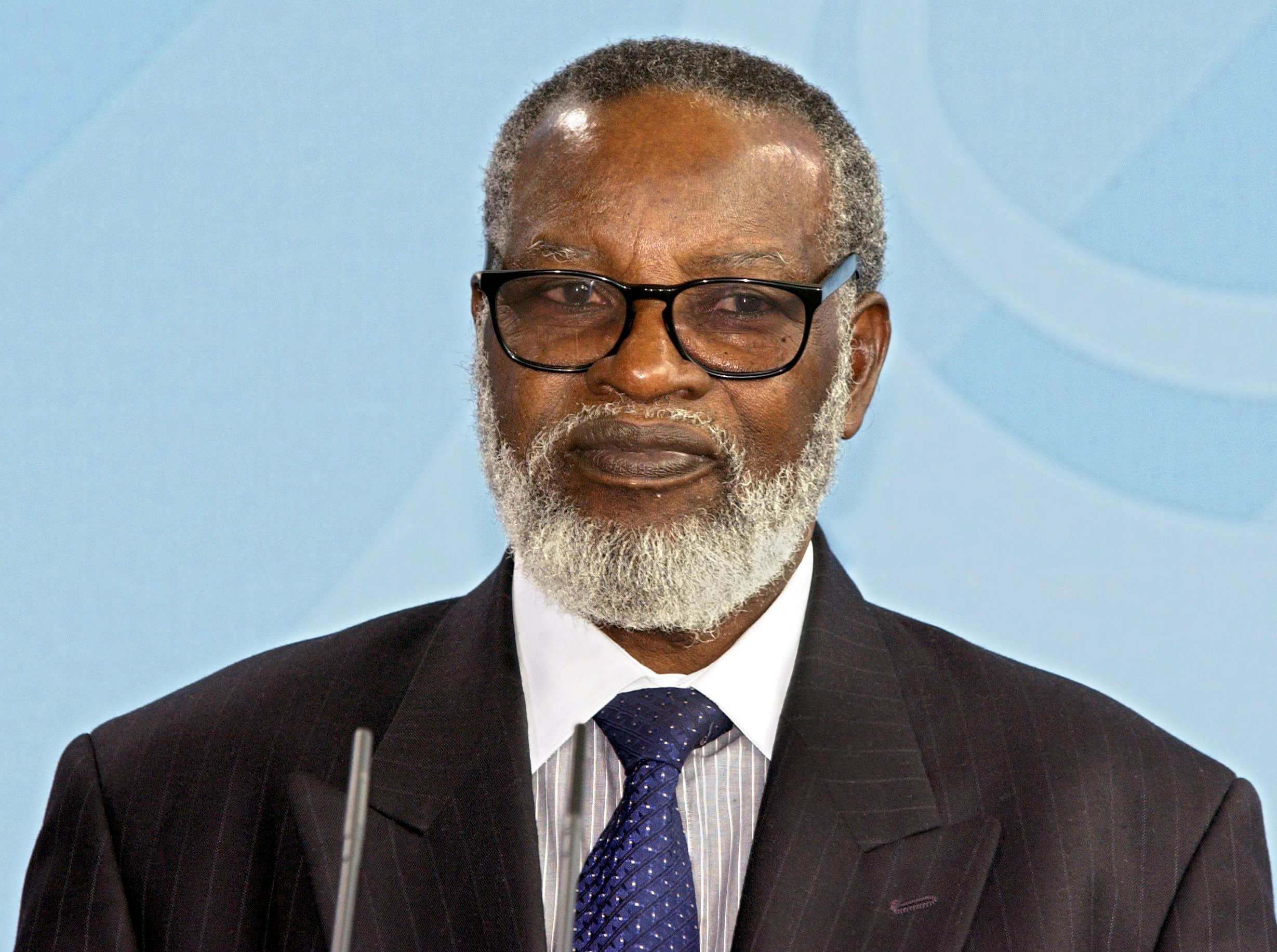
When Namibia became independent, South Africa kept the district of Walvis Bay, which included the major port of Walvis Bay. Namibian leaders said the district should be part of Namibia. In March 1994, South Africa gave Namibia control of the district. In 2004, Hifikepunye Pohamba, the SWAPO candidate, was elected president of Namibia. He was reelected in 2009. SWAPO’s Hage Geingob was elected president in 2014. He was reelected in November 2019. Geingob died in office on Feb. 4, 2024. Vice President Nangolo Mbumba assumed the presidency.
See also South Africa; United Nations (Working for self-government); Walvis Bay; Windhoek.
